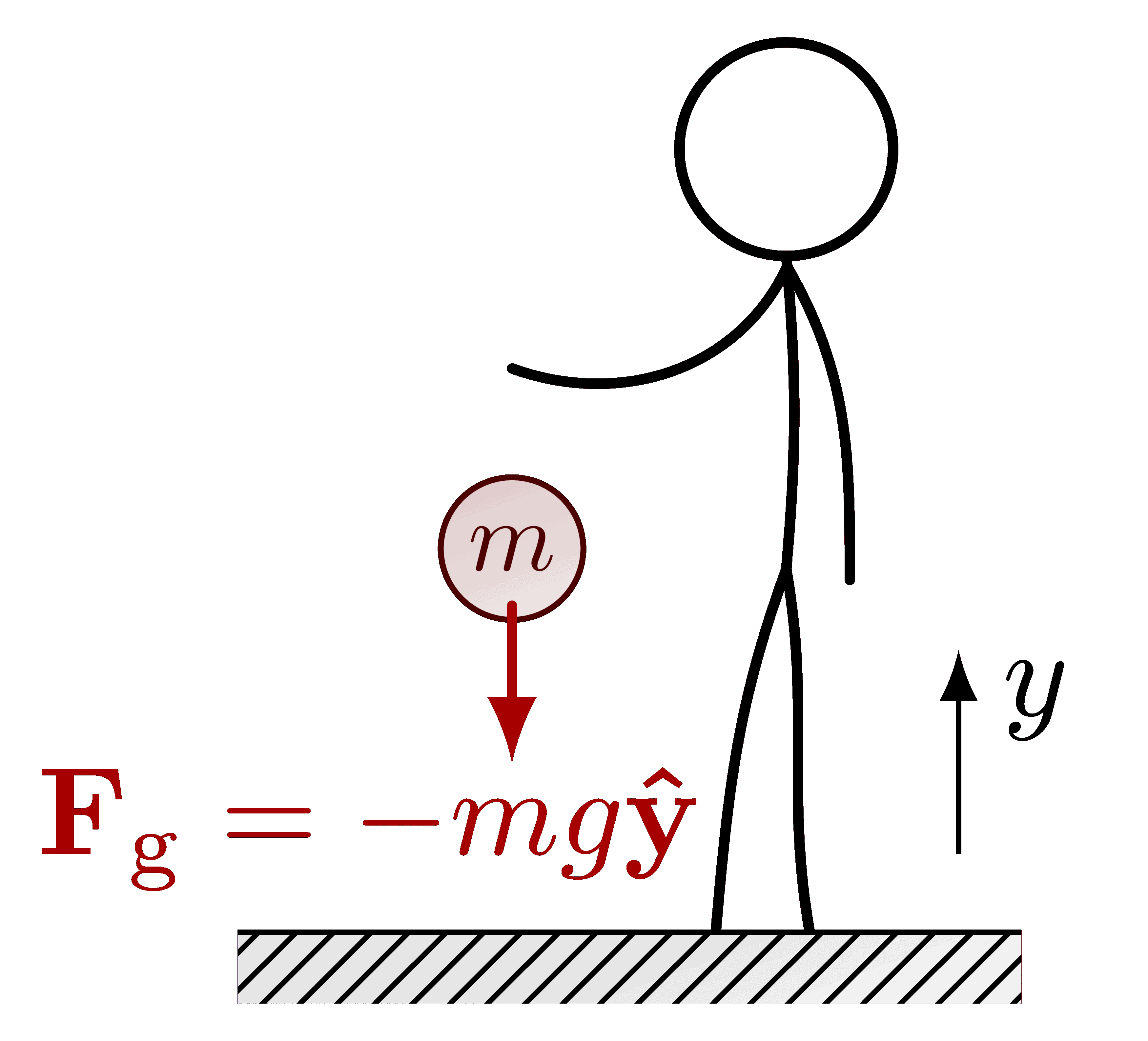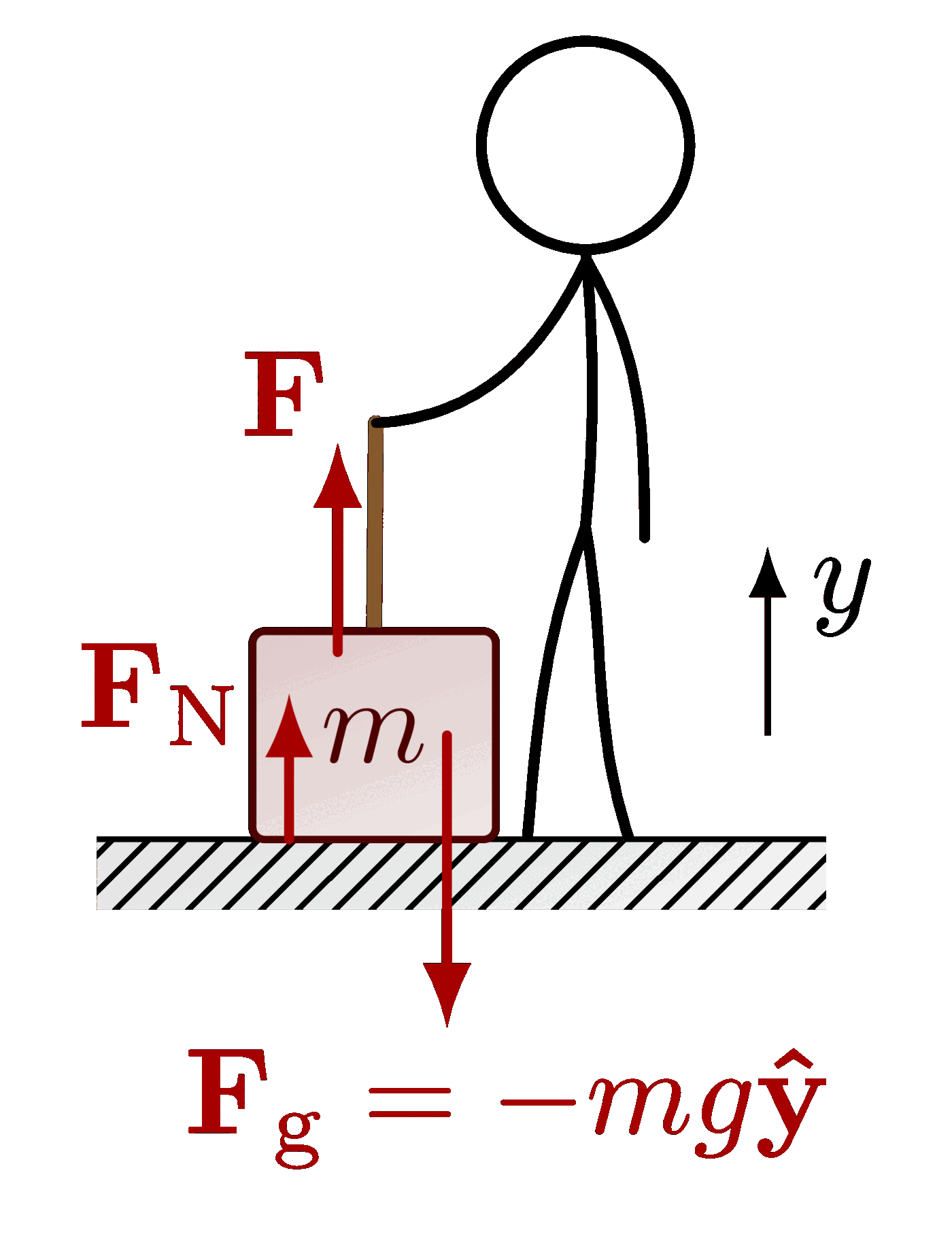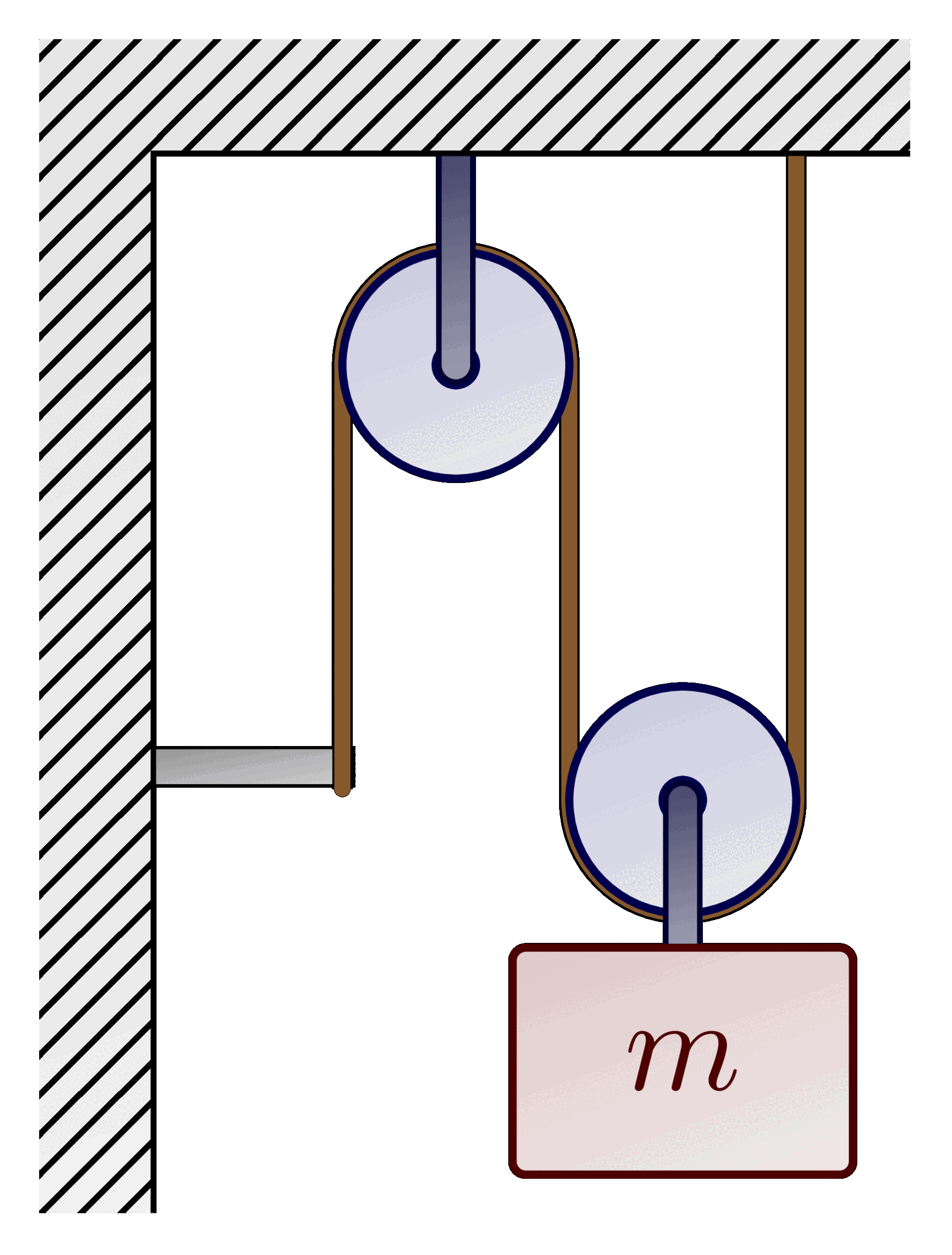Free body diagrams to show the friction force on a mass moving over a flat or sloped ground.
For more related figures, please see the “forces” and “Newton’s laws” tag.
Mass at rest: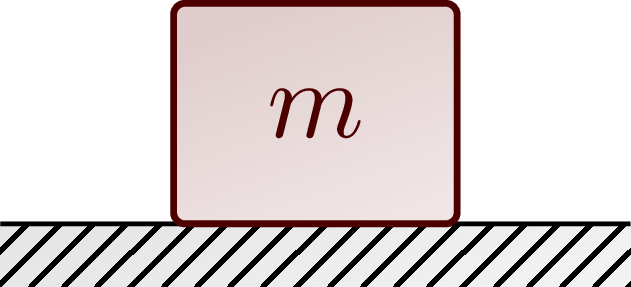 Pushing a mass by exerting a force, with an opposite friction force:
Pushing a mass by exerting a force, with an opposite friction force: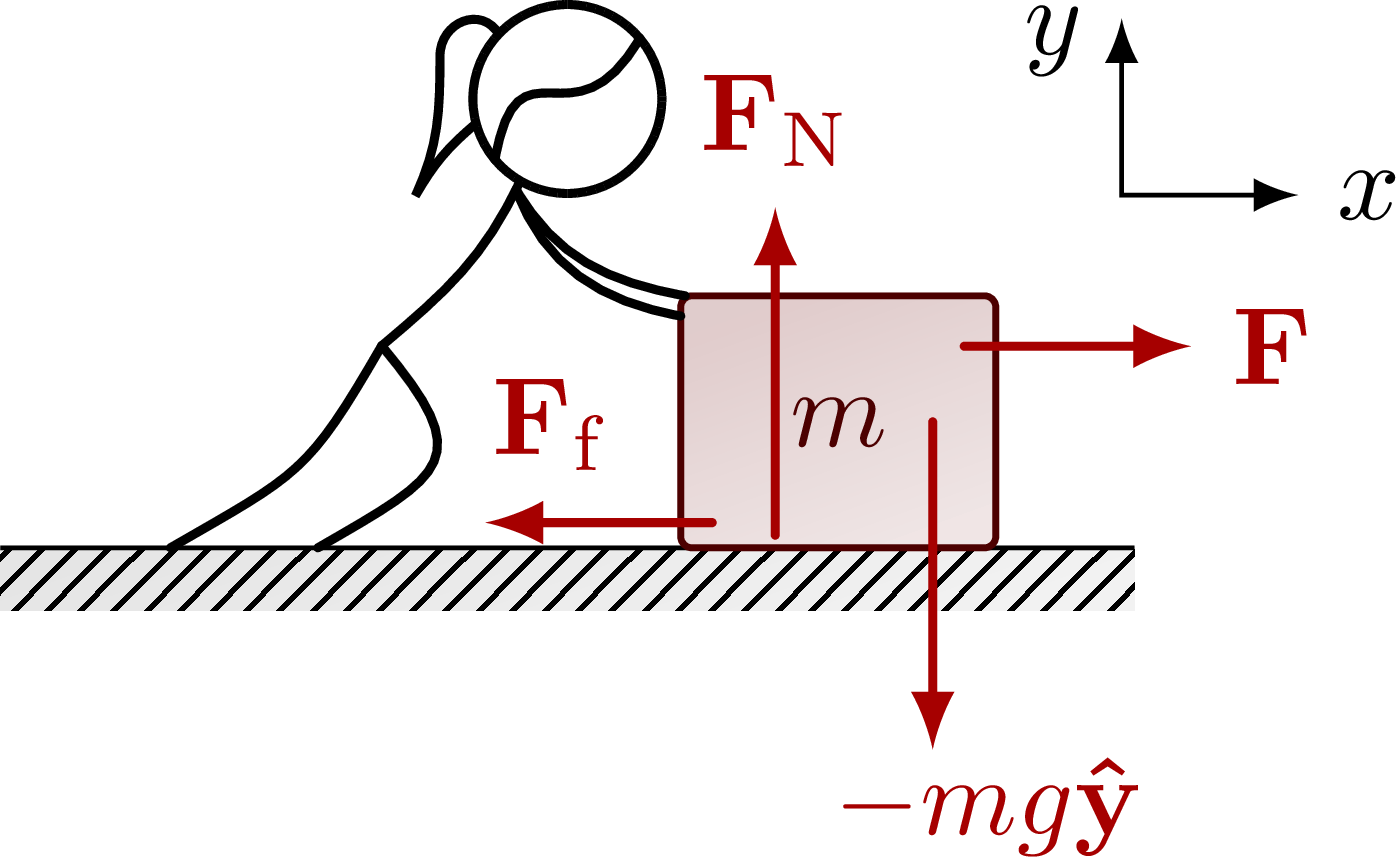 Pulling a mass:
Pulling a mass: A block on a slope:
A block on a slope: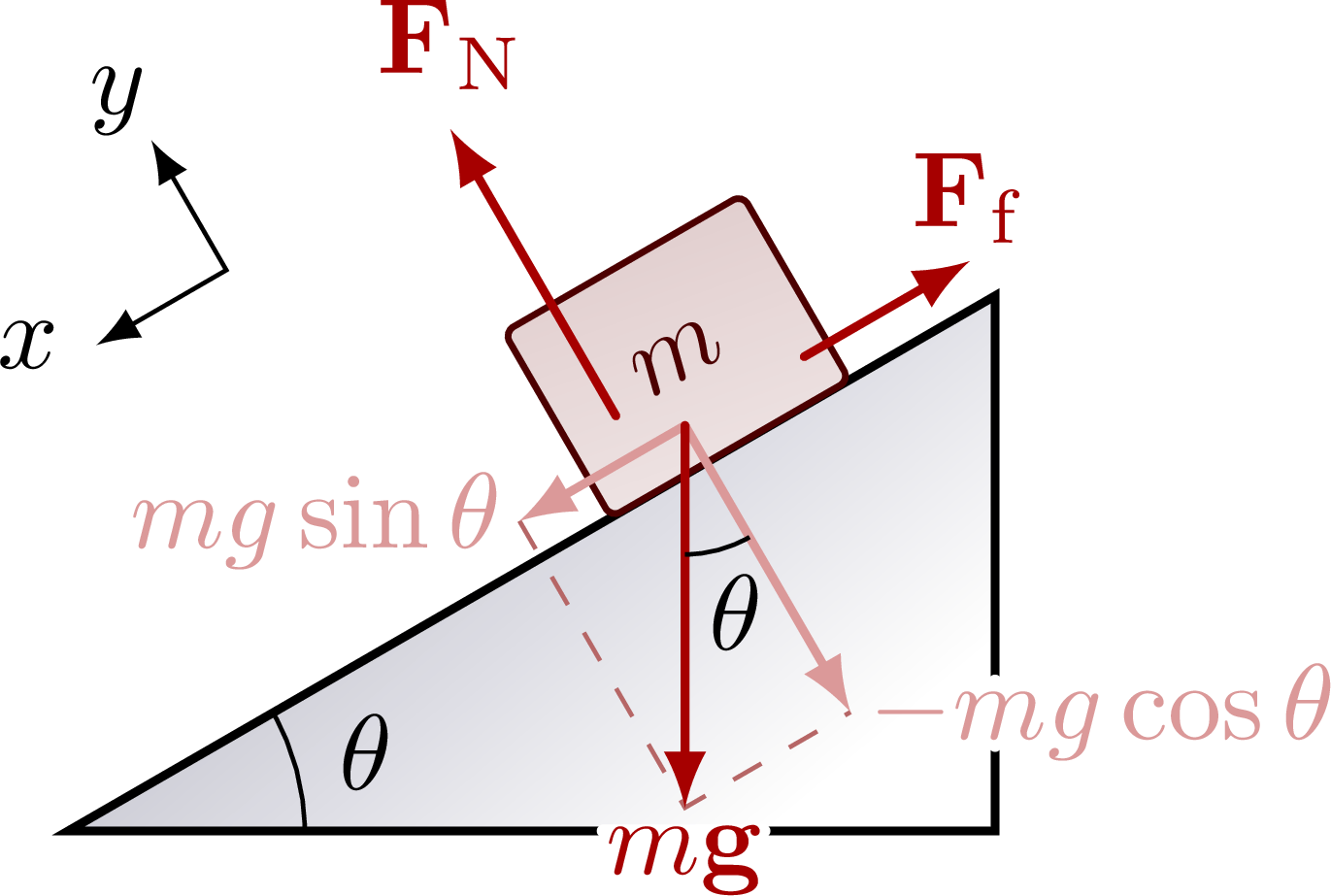 Force diagram breaking down the different components:
Force diagram breaking down the different components: Plot of the friction force as a fuction of the applied force:
Plot of the friction force as a fuction of the applied force:
Edit and compile if you like:
% Author: Izaak Neutelings (September 2020)% Inspiration: https://tex.stackexchange.com/questions/25531/adding-underbrace-in-tikz\documentclass[border=3pt,tikz]{standalone}\usepackage{physics}\usepackage{ifthen}\usepackage{tikz}\usepackage[outline]{contour} % glow around text\usetikzlibrary{calc} % for pic\usetikzlibrary{angles,quotes} % for pic\usetikzlibrary{patterns}\tikzset{>=latex} % for LaTeX arrow head\contourlength{1.2pt}\colorlet{myred}{red!65!black}\tikzstyle{ground}=[preaction={fill,top color=black!10,bottom color=black!5,shading angle=20},fill,pattern=north east lines,draw=none,minimum width=0.3,minimum height=0.6]\tikzstyle{mass}=[line width=0.6,red!30!black,fill=red!40!black!10,rounded corners=1,top color=red!40!black!20,bottom color=red!40!black!10,shading angle=20]\tikzstyle{rope}=[brown!70!black,line width=1.2,line cap=round] %very thick% FORCES SWITCH\tikzstyle{force}=[->,myred,thick,line cap=round]\tikzstyle{Fproj}=[force,myred!40]\newcommand{\vbF}{\vb{F}}\newboolean{showforces}\setboolean{showforces}{true}\begin{document}% HORIZONTAL ground\def\h{0.7} % mass height\def\w{0.9} % mass width\begin{tikzpicture}\def\W{2.0} % ground width\def\D{0.2} % ground depth\draw[ground] (-\W/2,0) rectangle++ (\W,-\D);\draw (-\W/2,0) --++ (\W,0);\draw[mass] (-\w/2,0) rectangle++ (\w,\h) node[midway] {$m$};\end{tikzpicture}
Click to download: dynamics_friction.tex • dynamics_friction.pdf
Open in Overleaf: dynamics_friction.tex


